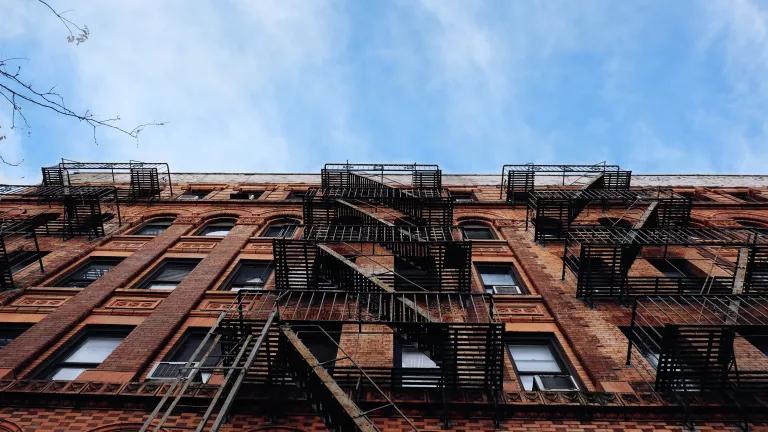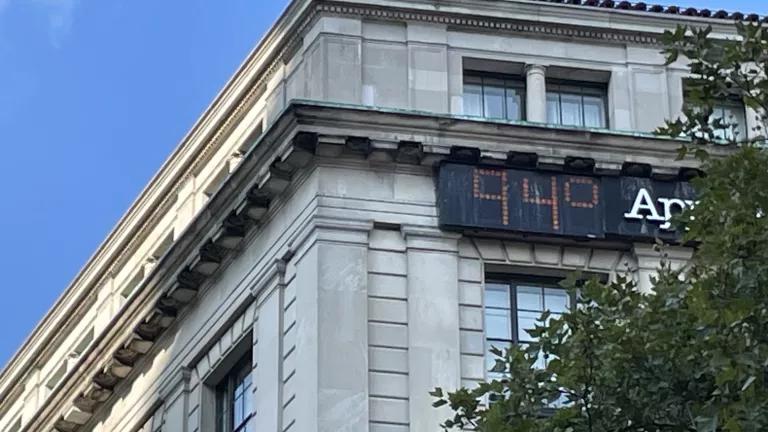Memo to Maryland: Start Over on Workplace Heat Protections
Maryland needs to shelve its weak and unenforceable proposal for workplace heat standards and start over again.

A UPS driver in Maryland.
Maryland Occupational Safety and Health (MOSH) closed a public comment period last week on a proposed rule to protect workers from heat. The overwhelming message from unions, worker advocacy groups, and heat experts—including NRDC—is this: Start over.
The current proposal is inadequate, unenforceable, and feels like a check-the-box exercise in response to a 2020 law. Our comments recommend that MOSH go back to the drawing board to thoughtfully create a science-based standard that will ensure Marylanders get home safely after working in the heat. Although anyone in an outdoor or insufficiently cooled indoor workplace can be affected by heat, more than 770,000 people in the state are employed in the most heat-vulnerable industries.
The COVID-19 pandemic has certainly challenged MOSH, just as it has every other health and safety agency in the country. However, there are plenty of resources the agency could have turned to as it drafted its proposal. These include existing standards from other states and the U.S. military, recommendations from the National Institute for Occupational Safety and Health, and, most importantly, the workers who put their bodies on the line when temperatures soar.
We provided feedback that MOSH didn’t make a best faith effort to meaningfully engage with affected Marylanders about the proposed standard, or to listen to what they had to say. MOSH should develop a new version that takes a more collaborative approach to identify and address the challenges workers face every day in the warm season.
Here are two of the most pressing items from NRDC’s comments to MOSH:
- The proposed standard’s temperature threshold is too high. MOSH’s proposed temperature for triggering the provisions of the heat standard is a heat index, or “feels like temperature,” of 89°F. That’s dangerously high, particularly for employees engaged in intense physical work such as roofing or firefighting, and those wearing heat-trapping clothing such as Tyvek suits. MOSH should use a heat index of no more than 80°F for workers in regular clothing. The threshold should be even lower for workers wearing heavy clothing or personal protective equipment.
- The proposed standard is unenforceable. One of the biggest failings of MOSH’s proposed standard is its lack of specific accountability requirements for life-saving measures such as drinking water, shade, and cooldown periods. Instead, MOSH just directs employers to develop their own plan to provide those things—and then doesn’t even require the plans to be in writing. This lax directive makes it easy for employers to do the wrong thing and impossible for inspectors to hold bad actors accountable.
But wait, there’s more! NRDC joined 37 other groups and 35 individuals on a letter to MOSH with many additional recommendations, which you can read here.
The health and safety threats of heat to Maryland workers are hardly new; from 2011 to 2020, an estimated 680 people missed at least one day of work in Maryland from heat-related illnesses. In fact, federal experts have been recommending an occupational heat standard since at least 1972.
But this old problem is getting worse because of fossil fuel-driven climate change, which is increasing the state’s average temperature and making heat waves longer, stronger, and more frequent. Although we urge MOSH to start over, the agency must not take another two plus years to develop a new version. Delay is deadly for Marylanders.
Maryland needs workplace heat protections in 2023 that:
- Are based on the best available evidence;
- Offer regulatory certainty to employers and employees;
- Enable workers to understand and stand up for their rights; and
- Make it possible for MOSH inspectors to do their job of holding unsafe employers accountable.
Only then will MOSH have created an effective tool to protect workers from preventable heat-related illnesses, injuries, and deaths.




